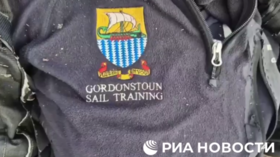Last Tsar’s tomb opens to tourists

A new exhibition dedicated to Russia’s last royal family has opened in St Petersburg. Under the title “Peter and Paul’s cathedral and the Grand Royal tomb – a necropolis of the Imperial House of Romanovs”.
The display focuses on the imperial dynasty beginning with Peter the Great and ending with Nikolay II. The exhibition is being held at the Peter and Paul Fortress’s gallery and follows scientific confirmation that the remains of Nikolay Romanov and his family were buried in the fortress.
The Grand Royal tomb has a unique place in the history of Russia as almost all the nation’s emperors and many members of royal families are buried there.
For the first time, their tombs are now open to the public.
Paintings from the 18th century, depicting royal ceremonies, are displayed alongside modern photographs showing the burial of the last Tsar and his family in 1998.
Also on display is a record of the cathedral’s interior decoration, carried out by renowned architects of the day.
Canvasses, drawings, and photographs show the rituals connected with the burial of emperors in Petersburg and the mourning ceremonies in the Peter and Paul Fortress and in Peter and Paul’s cathedral.
Historians say each ceremony was a work of art, a theatrical representation with costumes and scenery. Each one took about a month to prepare.
A royal funeral could involve up to 10,000 people. There were European elements in the ceremony, thanks to Peter the first’s fascination with the continent. Funeral processions were accompanied by the pealing of bells, and finished with a volley of shots.
In the gallery connecting Peter and Paul’s cathedral with the Grand Royal tomb are hung portraits of those emperors and members of their families buried in the necropolis in the Fortress.
Here also commemorative medals are on view, which were released in connection with coronation or death of this or that monarch.














